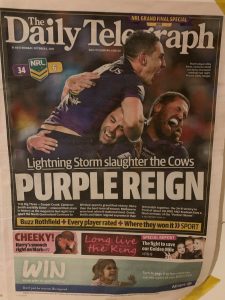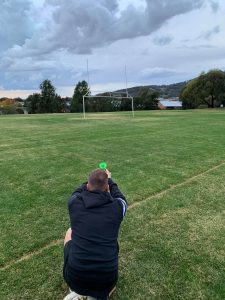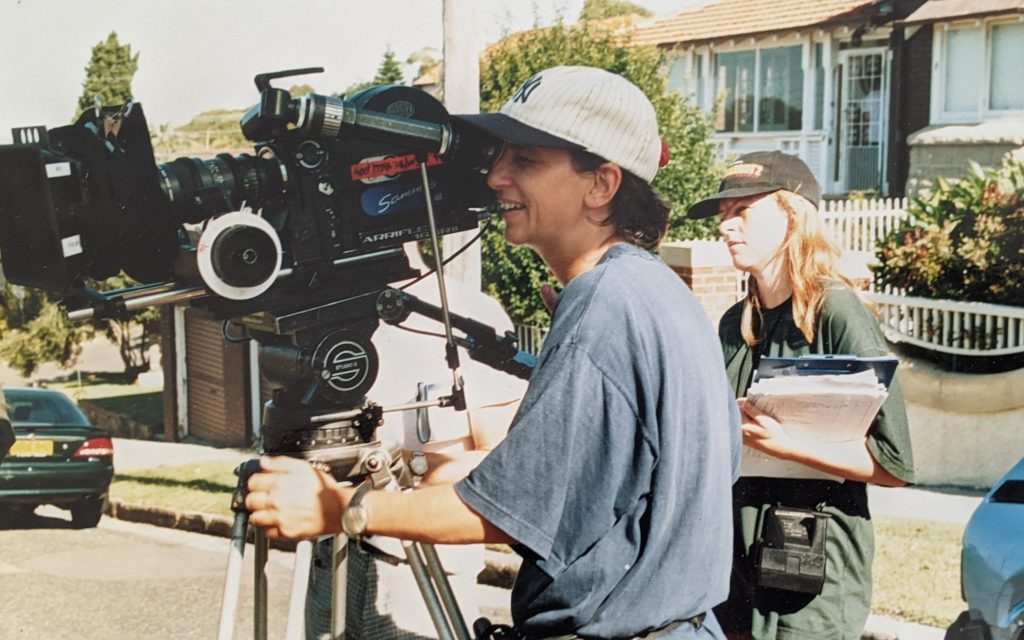Women at top of their game still on cutting room floor
By SIAN McGROUTHER
ONE athlete, two World Cups, an Olympic Games and an Ashes Series. What an incredible sportsman he is, right? Wrong. She is an incredible sports woman.
One Saturday afternoon I sat in the bleeding sun at Leichhardt Oval to watch Canberra United take on Sydney FC in a top of the table W League clash.
Families piled into the stadium carrying eskies full of cold drinks and portable sunshades. The grandstand was a sea of blue as the Sydney fans took to their seats, staring down the Canberra United supporters who were now making themselves at home on the grassy hill opposite.
The fans were there to watch a football match but I was there to watch Canberra United’s half-back Ellyse Perry.
Ellyse has played for the Matildas in a Football World Cup, has been part of a winning Australian team in a Twenty20 Cricket World Cup, and is the first female to have played in the Sydney men’s cricket competition.
If she were a male sports star she would have David Beckham like status in this country, however, those outside of the football world have probably never heard of her.
The match kicked off and by the 5th minute Ellyse had already blind-sided her defenders unleashing a superb right-footed strike.
The ball, perfectly placed, landed at the feet of Michelle Heymen who blasted it towards the top right hand corner of the goal, only to be denied by a flying one-handed save from Sydney’s Allison Lipsher.
If my eyes were to remain fixated on the match unfolding in front of me, I could have been forgiven for thinking I was at a world class football game. The skills and finesse displayed by the players was of a quality comparable to their male counter parts in the A League.
Despite the high intensity of the game, my eyes wandered away from the pitch from time to time to take in my surroundings. Unlike at other national level sporting competitions, my eyes were not met with the sight of camera crews, photographers, security or even seat ushers.
They were instead met with the view of a desolate 20,000 seat stadium where barely 200 people sat. Admission was cheaper than a standard ticket to an u18 NSW Boys Premier League game, yet the class of football on display was unparallel to that of the youth league.
Women have made a consistent and significant contribution to Australian sport at all levels, yet their achievements on the whole receive limited coverage by the mass media. The quality and quantity of the coverage of women’s sport by the media is not an accurate reflection of the amount of sport played or watched by women.
Media coverage is generally inadequate and selective. A high media profile is essential for attracting sponsorship, spectators and other sources of financial support.
Some male athletes are paid phenomenal wages to play sport, both in Australia and abroad. Leading sports such as rugby league, rugby union and the Australian Football League attract millions of dollars from television rights and sponsorship, while leading female sports such as netball and basketball have only in recent years stopped paying for their sports to be broadcast, a practice that hockey still endures.
This raises the question, why? Answers are being sought not only by the public and those in the sporting industry, but also by the government, reflected in the recent Senate inquiry into Women in Sport and Recreation in Australia.
The underlying reason for the difference appears to be media coverage and the culture of sport in Australia. That is the top sports in the country receive an abundance of media coverage, from newspapers and magazines to television and radio. That in turn then generates sponsorship and fans and overall money for the sports, which is filtered to the athletes.
So whilst I sat in the grandstand at Leichhardt oval, watching arguably one of Australia’s greatest athletes play football in front of 200 people, Fox Sports were less than 10km away producing live coverage of Sydney FC’s A League clash to the nation.
It is for this reason, according to Football Australia, that A League teams have a $2.3 million salary cap (excluding a marquee player), with players earning $50,000 to approximately $200,000 a year.
When contrasted with the measly $150,000 team salary cap that the women in the W league receive, the gender imbalance becomes blindingly obvious.
Whilst this gender imbalance continues in the media the achievements of sports women will often be invisible. A survey conducted by the Australian Sports Commission suggested that women’s sport accounts for just 2 per cent of total sports broadcasting on television, 1.4 per cent on radio and 10.7 per cent of total sports reporting in newspapers.
The participation of women in sport, at all levels, is marked by division and discrimination that is reinforced by negative gender stereotypes. Strict gender segregation marks all levels of sport and elite, professional sport remains the unquestioned domain of men. In 2009, the Associated Press named two racehorses among its top 10 female athletes, further highlighting the gaping hole in the media’s coverage of women in sport.
Capital Football Chief Executive Officer Heather Reid broke new ground when she became the first female CEO of a state football federation in 2004. She also recently contributed to the Senate inquiry and believes making women in sport more equal is imperative.
According to Reid, football has seen a significant shift in the past 15 years following the governing body FIFA’s recognition of the value of not only the women’s game, but women themselves, and issued a challenge to other sports.
“It wasn’t that long ago that FIFA president Sepp Blatter said ‘the future of football is feminine’,” Reid said.
At the far end of the football pitch, a lone Scotsman stood, intently observing the match that was being played before him. Tom Samanni, head of hoach of the Matildas, was at the top of the table clash scouting girls for the Matildas squad ahead of the Olympic Games qualifiers later this year.
He believes that for women in sport to gain greater exposure the influence women have on sport needs to start at the top and filter down.
“We need to see an increase in the number of women on the boards of sporting organisations, clubs and teams,” he said. “We also need to see an increase in the number of women participating in sport, coaching sport and running sports events.
“The more women involved in sport the higher the public interest will become for women’s sport. Public interest is what drives media coverage and unfortunately women in sport is not something that currently interests many of the public.”
Research by Johanna Adriaanse, the chair of the International Working Group on Women in Sport, supports Tom Samanni’s view that women need to have a more dynamic role within the sporting industry. Presently only 21% of board directors of national sport organisations in Australia are women. Furthermore, 20% of national sport organisations have no female directors at all.
This problem is part of a vicious cycle, the lack of coverage limits sponsorship opportunities which in turn restricts career and training opportunities and hampers the development and professionalism of sports.
The serious lack of media coverage allocated to women’s sport continues to enforce the long-held belief that the sporting field is a masculine arena and that women are not as skillful nor as worthy in sport as their male counterparts. Women must have dynamic roles within the sporting industry in order to receive the coverage they deserve.




Be the first to comment!